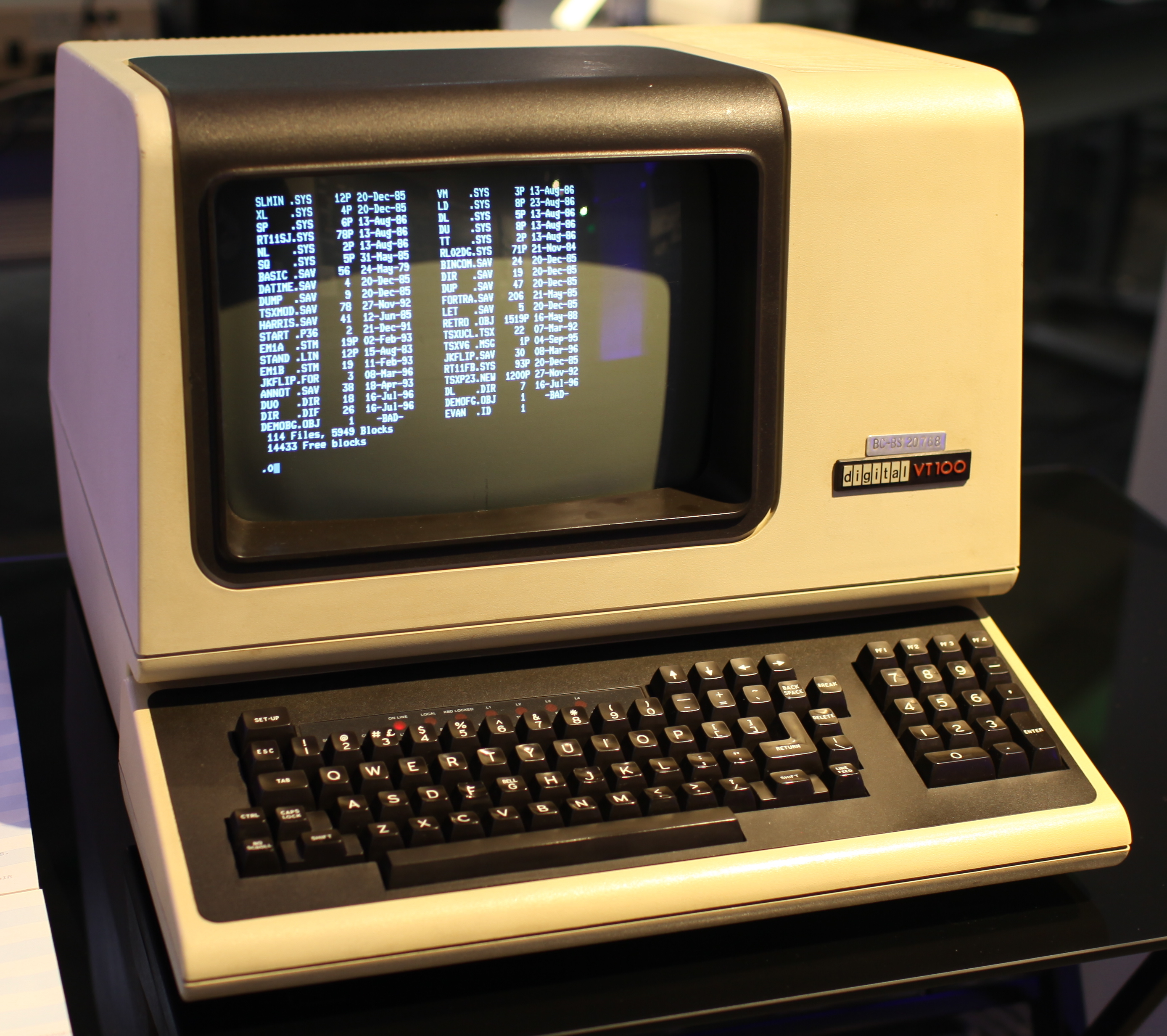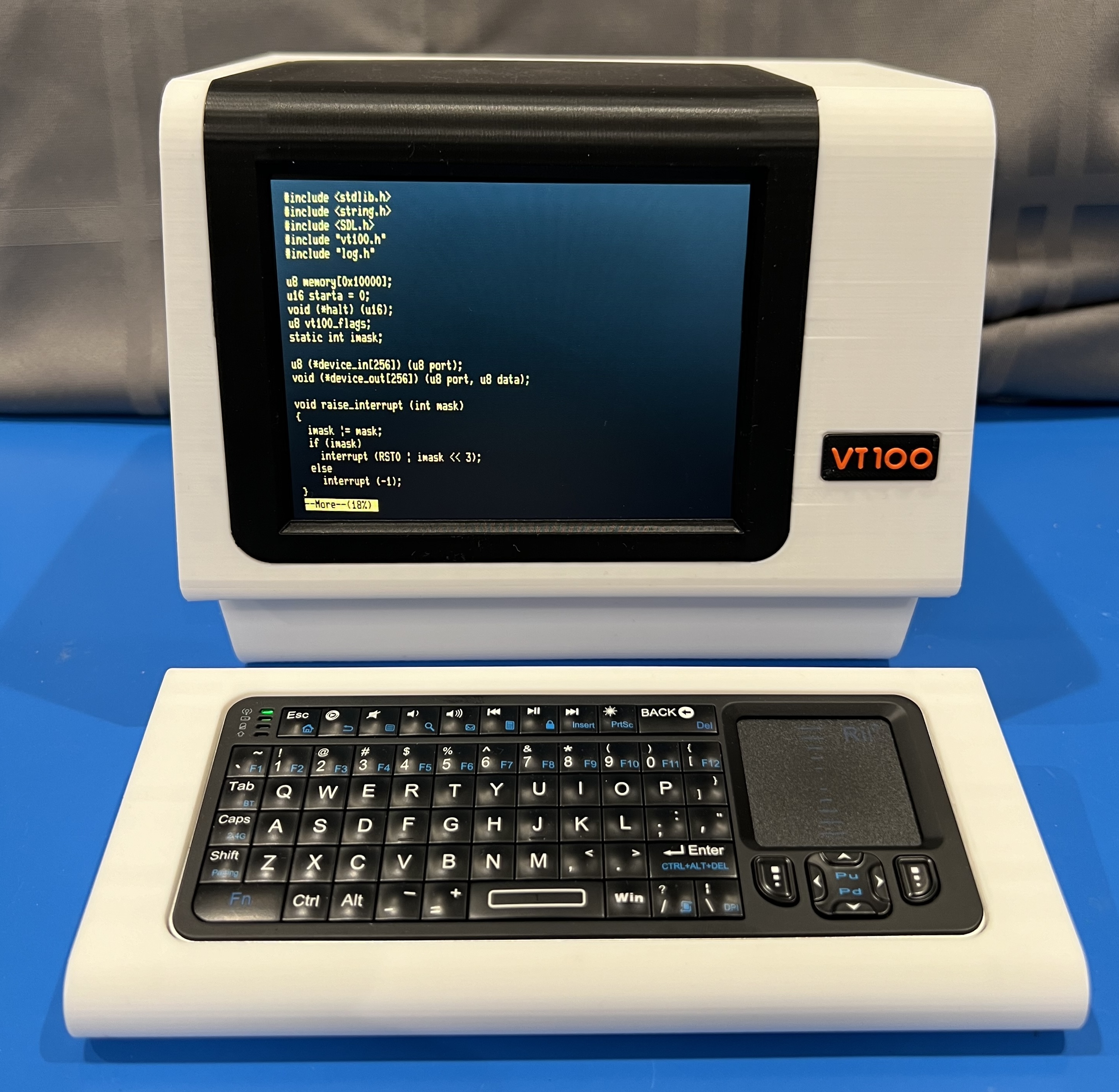This repository contains the instructions for building a Faux VT100. The model is meant to evoke the feel of a DEC VT100 terminal, but is not an exact replica. It has mounting spots for a Raspberry Pi, display, and associated hardware that allow you to run a terminal emulator and get the true VT100 experience.
There are two terminal emulators that make good choices for the FauxVT:
- The first is the wonderful VT100 Simulator by Lars Brinkhoff. It is a faithful software simulation of the VT100 hardware including the original firmware ROM. Do you want to get in and use the setup menus like the old days? This is the way to go! Lars points at that the simulator is "somewhat experimental and the performance running on a Raspberry Pi could use some attention from an expert."
- The second is the very aptly named Cool-Retro-Term by Filippo Scognamiglio. From GitHub: "cool-retro-term is a terminal emulator which mimics the look and feel of the old cathode tube screens. It has been designed to be eye-candy, customizable, and reasonably lightweight."
Take a look at a short video of the model in operation.
Instructions: This document desribes how to print, assemble, wire, and prepare software for FauxVT.
THIS IS A WORK IN PROGRESS: The documentation on required electronics, wiring, and software setup is not complete. At this point you should consider yourself an alpha-tester!
The STL files for FauxVT can be found on printables.
If your vintage computer tastes run more towards classic Macs, check out the Faux Mac. If you're a TRS-80 person, check out the Faux TRS.
- Audio: Add an internal audio amp and speaker. Currently you can set up an external bluetooth speaker or headphones to get sound. In the future I may add an internal audio amp and speaker.
- Configurable Back Plates: Add an opening in the back of the case into which a connector platesmay be attached with screws. There could be many plates each of which offers a different configuration of external connectors. For example, one plate might have openings for 2 USB ports and 2 DB9 ports. Another plate might have USB ports and an opening for a micro-sd slot (extended from the Pi). This way the back of the case would be configurable without having many versions. A blank plate would be available for those who don't need any extra external ports.
This work is licensed under a Creative Commons Attribution-NonCommercial 4.0 International License.



